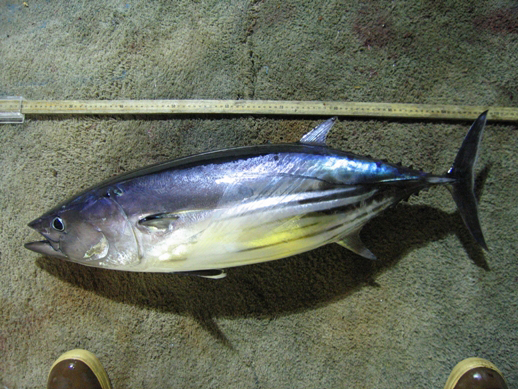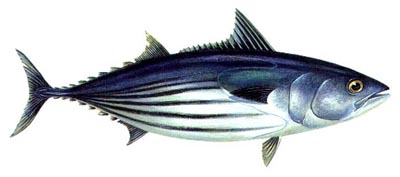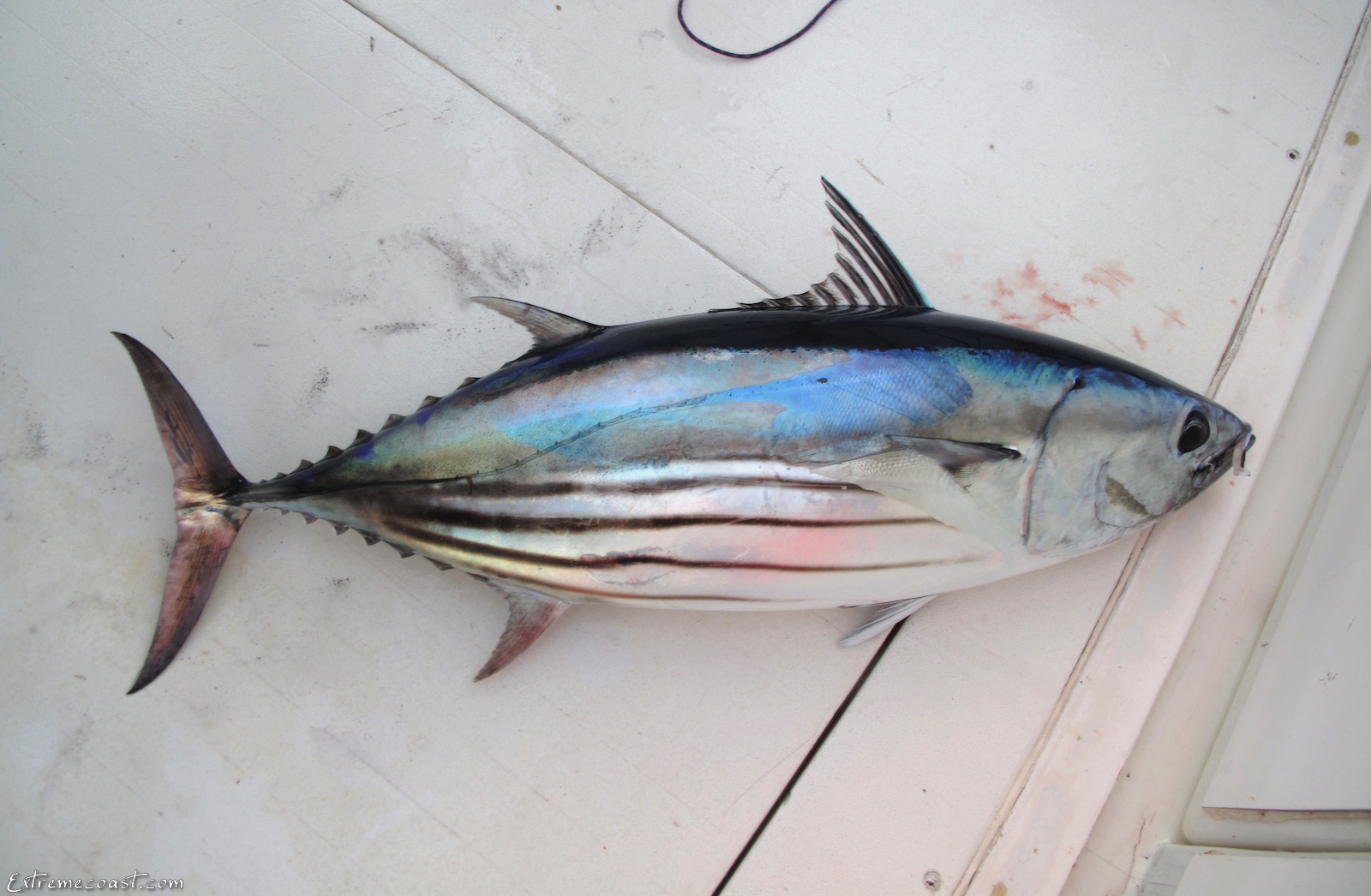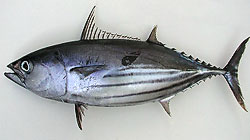
Katsuwonus pelamis
FAMILY
Scombridae
TAXONOMY
Katsuwonus pelamis (Linnaeus, 1758), “pelagic, between the
tropics.”
OTHER COMMON NAMES
French: Bonite а ventre rayй; Spanish: Listado.
PHYSICAL CHARACTERISTICS
Maximum fork length approximately 43 in (108 cm) corresponding
to a weight of 72–76 lb (32.5–34.5 kg), commonly to
31 in (80 cm) and 18–22 lb (8–10 kg). Body fusiform, elongate,
and rounded. Two dorsal fins separated by a narrow interspace,
the first with 14–16 spines, the second dorsal and anal
fins followed by seven to nine finlets. Pectoral fins short, with
26 or 27 rays. Body naked except for anterior corselet and lateral
line. Caudal peduncle very slender with a strong lateral
keel between two smaller keels. Swim bladder absent. Gill rakers
numerous, 53–63 on first gill arch. Back dark purplish blue,
lower sides and belly silvery, with four to six very conspicuous
longitudinal dark bands.
DISTRIBUTION
Cosmopolitan in tropical and warm-temperate seas but absent
from the Black Sea.
HABITAT
An epipelagic oceanic species with adults distributed within the
59°F (15°C) isotherm. Aggregations of this species tend to be
associated with convergences, boundaries between cold and
warm water masses. Depth
DISTRIBUTION
ranges from the surface
to about 853 ft (260 m) during the day.
BEHAVIOR
Skipjack show a strong tendency to school in surface waters.
Schools are associated with birds, drifting objects, sharks,
whales, and other tuna species.
FEEDING ECOLOGY AND DIET
Skipjack are opportunistic feeders preying on any forage
available. Feeding activity peaks in early morning and late
afternoon. Food items include fishes, crustaceans, and
mollusks.
REPRODUCTIVE BIOLOGY
Skipjack spawn in batches throughout the year in equatorial
waters and from spring to early fall in subtropical waters. The
spawning season becomes shorter as distance from the equator
increases. Fecundity increases with size but is highly variable.
The number of eggs per season in females 16–24 in (41–87
cm) fork length ranges from 80,000 to two million.
CONSERVATION STATUS
Not threatened.
SIGNIFICANCE TO HUMANS
Skipjack make up approximately 40% of the world’s total
tuna catch and have come to replace yellowfin as the dominant
commercial species of tuna. Catches of skipjack were
reported to FAO by 94 countries for 1991–2000, 1,584–
2,191 thousand tons (1,437–1,988 thousand metric tons)
per year. The highest catches reported for 2000 were by
Japan, 376 thousand tons (341 thousand metric tons), and
Indonesia, 298 thousand tons (270 thousand metric tons).
Skipjack are taken at the surface, mostly with purse seines
and pole-and-line gear, occasionally with long lines. They
are marketed fresh, frozen, and canned (as light-meat tuna).
They are also a game fish, the all-tackle gamefish record
is a 45-lb (20.5-kg) fish caught on Flathead Bank, Baja
California.
Photo Gallery of - Skipjack tuna





 Animalia Life
Animalia Life